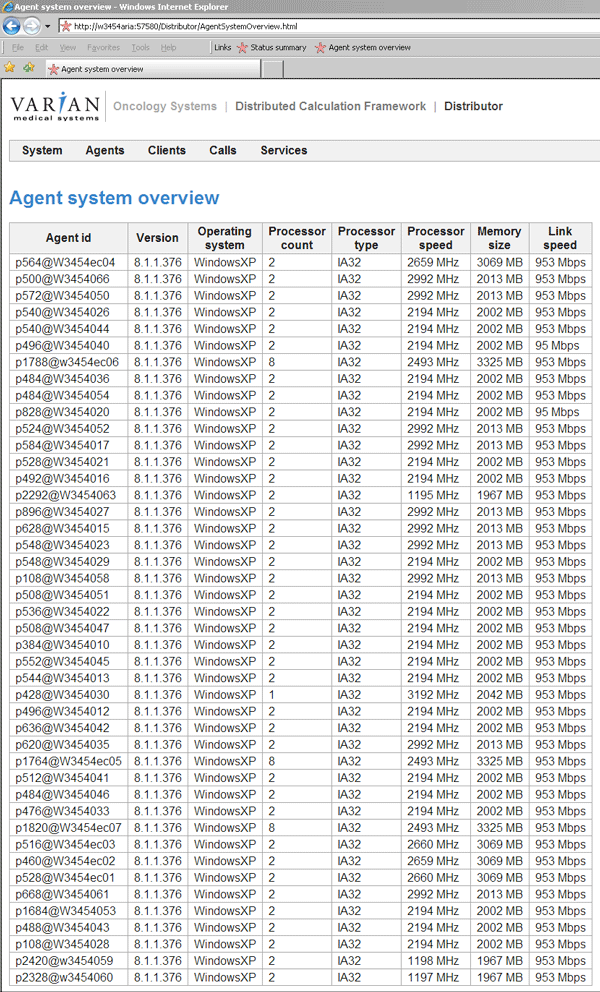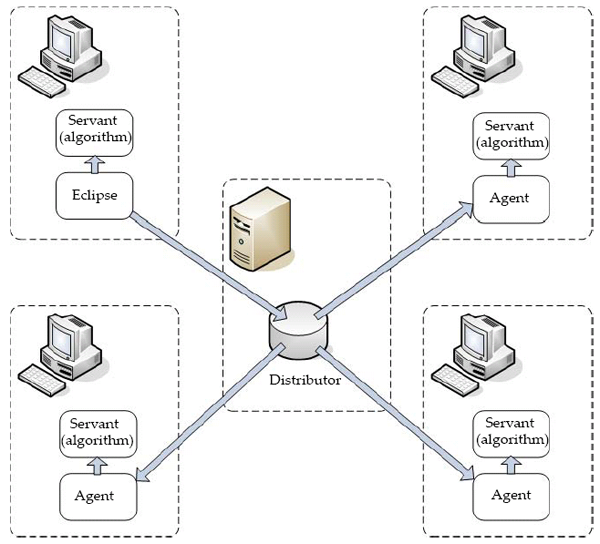On March 20, 2009, we upgraded our Distributed Calculation Framework to Version 8.6.14. After all clients were ghosted with Windows XP (English version, a prerequisite for installing DCF agents) and three new RapidArc capable 8-core workstations were integrated, dose calculation now runs on 105 cores with a total memory of 96.5 GB.

Up to 5 Electron Monte Carlo (eMC) dose calculations can be started simultaneously on 5 different Eclipse workstations, each running with a parallelisation factor of 9.
The principle of distributed calculation shall be explained in the following image (see also our description of eMC 8.1.14 and eMC 8.1.17):

On the workstation in the upper left corner, a user clicks on the Calculate button for a 4-field prostate plan. Since the DCF is set to hybrid mode, one field is calculated locally and the other fields are sent over the network to workstations which are running DCF agents. These machines are not necessarily full-blown Eclipse workstations. As soon as all fields are calculated, dose is displayed locally.
On 8-core machines, it would make sense to calculate all fields locally, to reduce network traffic. This works for a 4-field plan. But due to memory limitations of the 32-bit Windows OS, not more than 4 cores can calculate, although 8 cores would be available. The bottleneck now is the 32-bit Eclipse and the 32-bit OS. While 64-bit Windows is available, 64-bit Eclipse is not.
Electron fields show a tremendous increase in processing speed. With 45 agents, the default parallelization factor can be set to the maximum of 16. The average calculation time of an electron field shrinks a minute or two (depending on energy, field, grid and patient size).
In 8.6.14, the Progress Window has been improved (click to enlarge):
From the screenshot, one can calculate the following: in the first 46 seconds (timer on the left), 16.92 million particle histories were calculated, equivalent to 368.000 particle histories per second. This is more than twice the speed of DCF 8.1.17.
